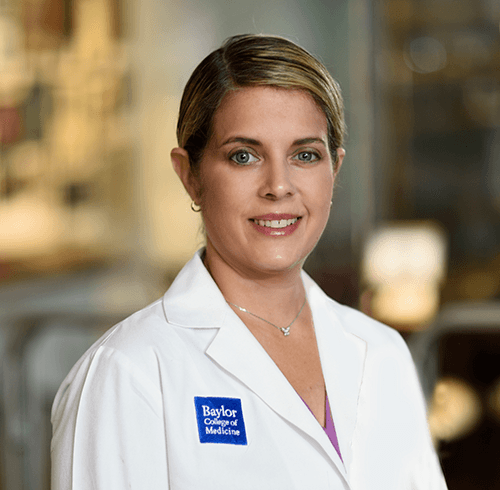Types of Hernias and the Benefit of Care at a Hernia Center
Hernias occur when an internal organ or tissue pushes through a weak point or tear in the surrounding muscle or tissue.

“In general, treatment for hernias involves surgery to repair the weakened area of the abdominal wall and prevent the hernia from recurring,” says Dr. Michele Loor, hernia repair surgeon. “It’s important to seek medical attention if you have symptoms of a hernia, as untreated hernias can lead to serious complications.”
There are several types of hernias, each with its own causes, symptoms and treatment options. Here are the most common types:
- Inguinal hernia: This type of hernia occurs in the groin area when part of the intestine or abdominal tissue pushes through a weak spot in the abdominal muscles. It is more common in men than in women. Symptoms include a bulge in the groin, pain or discomfort and a feeling of heaviness. Treatment involves surgery to repair the hernia.
- Epigastric hernia: This injury occurs in the upper abdomen between the belly button and the breastbone when fatty tissue or part of the intestine pushes through a weakened area of the abdominal wall (different from the diastasis recti discussed below). Symptoms can include a painless or painful lump in the upper abdomen. Treatment involves surgery to repair the hernia.
- Incisional hernia: This hernia happens at the site of a previous surgical incision when part of the intestine or abdominal tissue pushes through the weakened area of the incision. Symptoms include a bulge or swelling at the site of the incision, pain or discomfort. Treatment involves surgery to repair the hernia.
- Umbilical hernia: This hernia occurs when part of the intestine or abdominal tissue pushes through the abdominal wall at or near the belly button. They can initially present in childhood and then grow or can occur later in life. Symptoms include a bulge near the belly button that may get bigger when coughing or straining. Treatment in infants and children usually involves observation as the hernia may close on its own by age 2 or 3. In adults, surgery may be necessary to repair the hernia.
- Hiatal hernia: This hernia occurs when part of the stomach pushes up into the chest through the diaphragm, which is the muscle that separates the chest from the abdomen. It is more common in people over 50 and those who are overweight. Symptoms include heartburn, chest pain, difficulty swallowing and regurgitation of food. Treatment involves lifestyle changes such as losing weight, avoiding certain foods and medications to reduce stomach acid. In some cases, surgery may be necessary.
- Diastasis recti: This injury can present with similar symptoms of a hernia but is a stretching of the tissues between the rectus muscles (the six-pack muscles that run up and down on either side of the abdomen) as opposed to an actual hole. The most common symptom associated with this is a painless bulging ridge of the upper abdomen (between the breastbone and the belly button) that presents with sitting up from a reclined position, coughing or other activity that increases the pressure inside the belly. Diastasis is most common in pregnant and postpartum women and those with increased weight around the midsection. Diastasis is treated primarily with weight loss and physical therapy to help strengthen the core muscles.
Seeing a specialist at a hernia center who understands different types of hernias is important for several reasons:
- Accurate diagnosis: Different types of hernias require different treatment approaches. A specialist who is knowledgeable about the different types of hernias can accurately diagnose the type of hernia a patient has and recommend the appropriate treatment.
- Expertise in treatment options: Hernia specialists are experts in the various treatment options available for hernias, including surgical approaches and nonsurgical management. They can recommend the most appropriate treatment based on a patient’s circumstances and preferences.
- Improved outcomes: Seeing a hernia specialist who is experienced in treating different types of hernias can result in improved outcomes for patients. Specialists are better equipped to perform complex surgeries and can optimize a patient’s recovery with fewer complications.
- Access to cutting-edge treatments: Hernia specialists are up to date on the latest advances in hernia care and can offer patients access to cutting-edge treatments that may not be available elsewhere.
Overall, seeing a specialist at a hernia center who understands different types of hernias can lead to better outcomes for patients and a more comprehensive, personalized approach to care.
If you suspect you may have a hernia and would like to see our specialists at the Baylor Medicine Hernia Center, call (713) 798-6363.
By Tiffany Harston, communications associate with the Michael E. DeBakey Department of Surgery.



